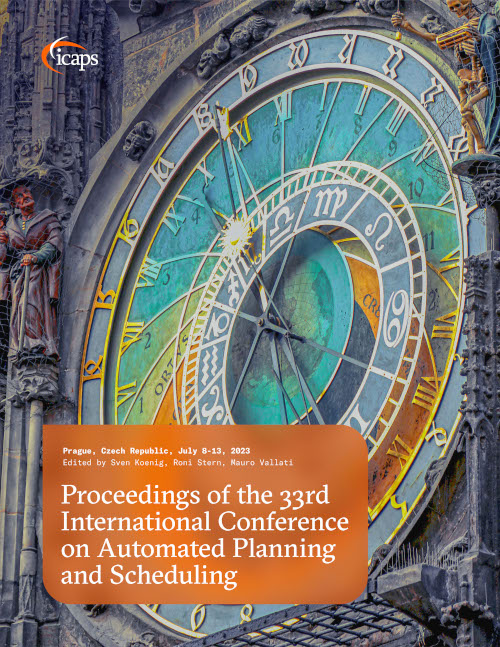Can They Come Together? A Computational Complexity Analysis of Conjunctive Possible Effects of Compound HTN Planning Tasks
DOI:
https://doi.org/10.1609/icaps.v33i1.27209Keywords:
Theoretical foundations of planning and schedulingAbstract
Recently, inferred effects of compound (totally ordered) HTN planning tasks were introduced. Guaranteed effects are those which hold true after all executable refinements of such a task, whereas possible effects are only required to hold after some of them. It is known that we can decide in P whether a single fact is a precondition-relaxed possible effect. For this relaxation, it was not clear whether groups of effects could be determined in P as well. We show that the problem turns NP-complete for conjunctive possible effects of arbitrary size. A more positive result is that this problem is fixed-parameter tractable, i.e., for any fixed number of possible effects, we can verify (and compute) them in P. As a side product of our investigations, we obtain novel results for total-order HTN planning problems with goal description: When ignoring action preconditions, plan existence is NP-complete and remains NP-hard even when the problem is additionally acyclic, regular, and delete-relaxed.Downloads
Published
2023-07-01
How to Cite
Olz, C., & Bercher, P. (2023). Can They Come Together? A Computational Complexity Analysis of Conjunctive Possible Effects of Compound HTN Planning Tasks. Proceedings of the International Conference on Automated Planning and Scheduling, 33(1), 314-323. https://doi.org/10.1609/icaps.v33i1.27209

